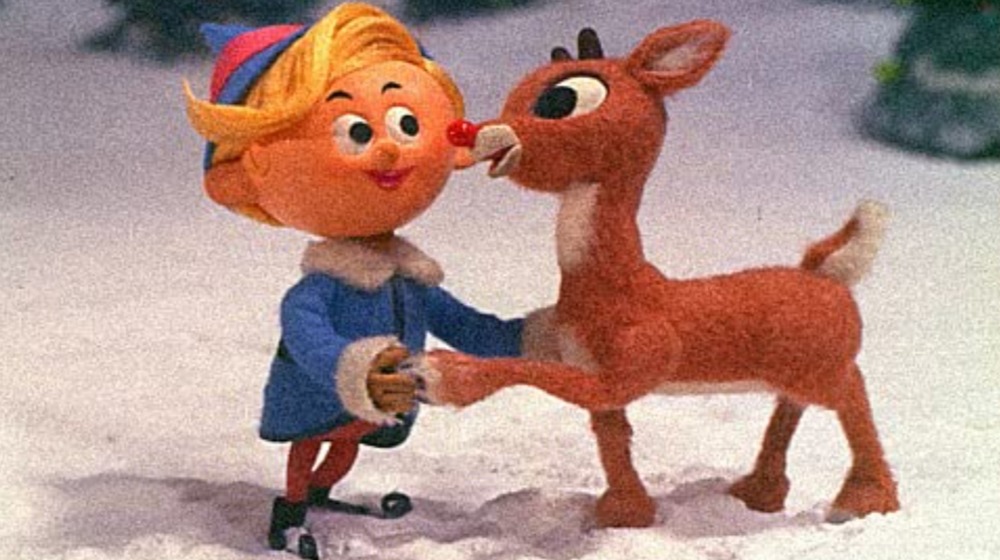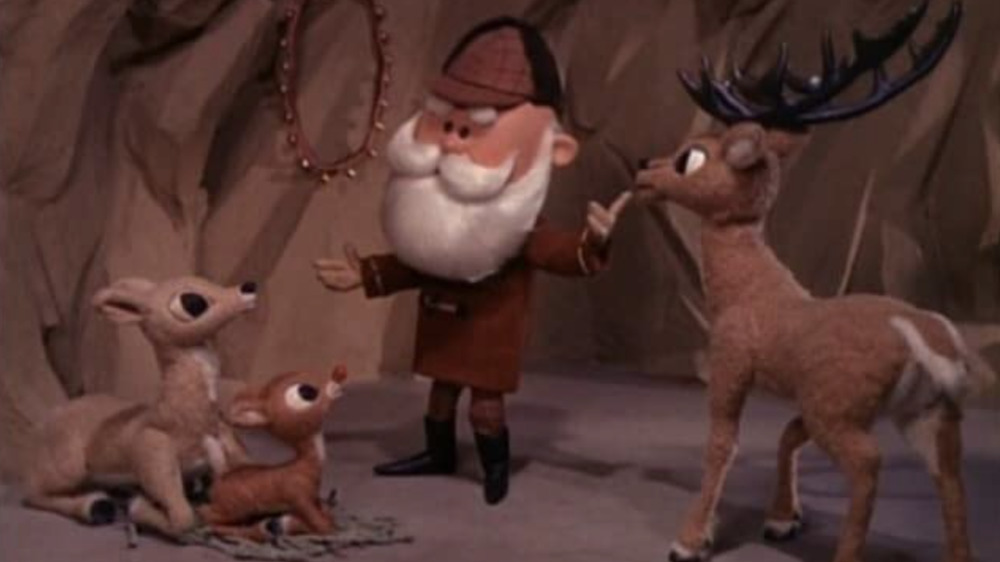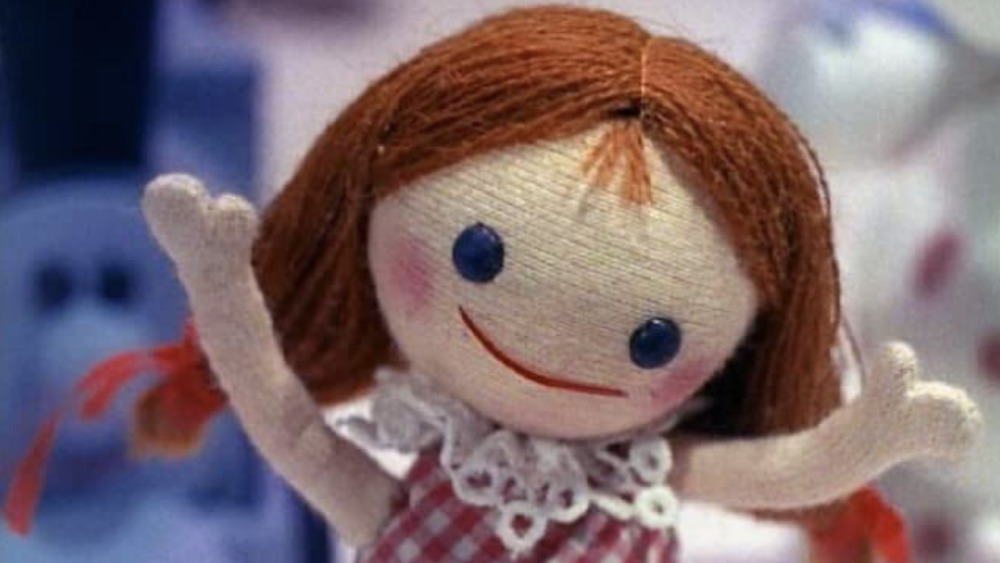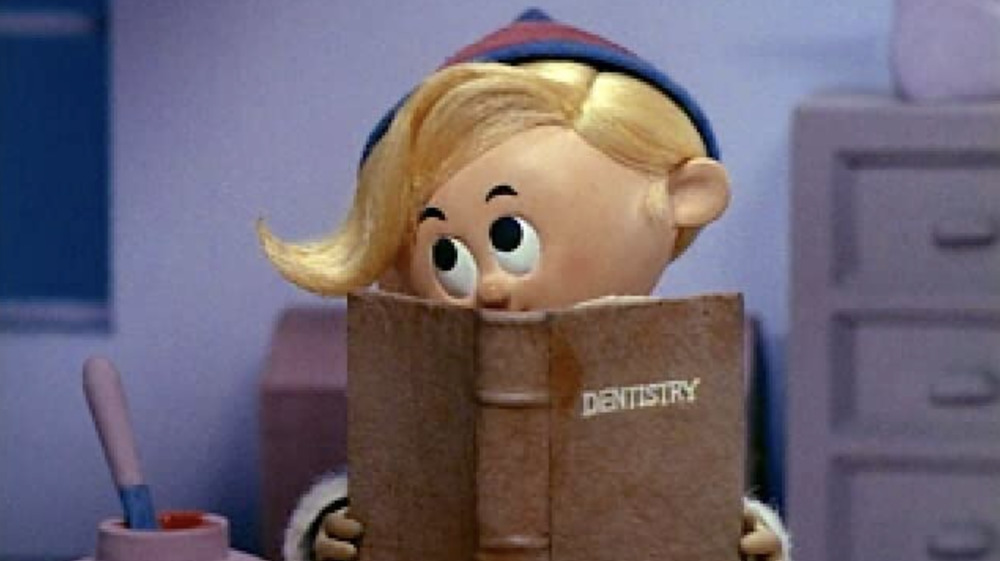Things Only Adults Seem To Notice About Rudolph The Red-Nosed Reindeer
For nearly six decades, Rudolph the Red-Nosed Reindeer has been as much a part of the holiday season as shopping, carols, and assembling toys at 2 a.m. on the 24th. The Rankin-Bass special has a long history (per Smithsonian Magazine); it began as a little storybook given away as a marketing campaign for the Montgomery Ward department store in 1939, and from there, it went on to become a hit song that inspired the show. The Animagic stop-motion technique wowed audiences and critics alike, and led to a slew of other classics such as Santa Claus Is Comin' to Town and The Year Without a Santa Claus. Without these holiday animation innovators, The Nightmare Before Christmas and Fantastic Mr. Fox probably may never have come to be.
Still, it's hard to look at this classic show without noticing a few details that seem off-key to our 21st-century eyes. Here are some issues that adults have with the reindeer who went down in history.
Santa seems like a not very nice guy
The first thing that stands out to grown-ups is the show's portrayal of Santa Claus (via YouTube). From the first time he appears onscreen — visiting Rudolph's family while wearing a deerstalker hunting cap – Kris Kringle shows an uncharacteristically un-Santa-like nature. He's immediately repulsed by Rudolph's red nose, regretting that the little fawn will never be a member of his sleigh team. (Why is conformity so important in a group of animals that goes out in public only one night a year?) Back in his workshop, Santa refuses his wife's cooking, then goes all Simon Cowell on his elves ("Mmm ... needs work") when they sing and dance for him. He either has no clue that young Rudolph is being bullied by all of the other reindeer or he's deliberately ignoring it.
But perhaps the most cringe-y moment for Santa is also the most iconic: After ignoring Rudolph all this time, he finally asks, "Won't you join my sleigh tonight?" when he realizes the misfit deer is his only hope for navigating the Christmas Eve storm.
The show is all about the guys
Even by 1960s standards, Rudolph comes across as mighty sexist. All the female characters are minor ones, and they're as stereotypical as they come. Mrs. Claus fusses like a mother hen, urging Santa to eat ("Nobody wants a skinny Santa!"). The identical girl elves do nothing but sing and look cute. Rudolph's love interest Clarice does have a sweet moment with her song, "There's Always Tomorrow," but that's as far as her character goes. She and Rudy's mom go off in search of the missing deer (defying orders that this is "man's work"), and promptly get captured by the hungry Abominable Snow Monster. Instead of running or fighting, they just cower in his cave and wait to be rescued by the guys.
Then there's the toy Dolly, who spends her days crying over being stuck on the Island of Misfit Toys ("I don't have any dreams left to dream"). Fans have wondered for years exactly what makes her a misfit; it's not like she has a missing limb or is a Chucky-esque ax murderer. Producer Arthur Rankin finally revealed her backstory to NPR in 2007; he explained that Dolly was abandoned by her original owner and suffers from depression as a result (via Television Academy). So if you're looking for a strong female role model to show your kids, you'll have to look elsewhere.
More unexplained things in Rudolph the Red-Nosed Reindeer
Nobody expects a holiday cartoon to be totally logical; still, with Rudolph, there are a lot of puzzling elements. For instance: Is the show actually a metaphor for the LGBTQ+ community's struggle for acceptance? After all, Rudolph and Hermey are distinctly different from their peers, can't fit in no matter how they try, and are rejected for being their authentic selves (via Vulture). This seemingly simple holiday special have been hiding a deeper message?
Also, who took care of elves' teeth before Hermey came along? For that matter, who does all the housekeeping, cooking, tailoring, repair work, and cleaning reindeer poop at the North Pole? Does Mrs. Claus work overtime, or is there a separate staff hidden behind the workshop?What's more, most of the Misfit Toys have basic manufacturing defects. So if the elves make all the toys, which one was responsible for making the jelly-squirting gun and the square-wheeled train, and is he still employed? And speaking of the Misfits, why has Santa been turning a blind eye to them all these years? Doesn't he realize that some child might actually want a Charlie-in-the-Box?
Ah, well. Sometimes you have to stop being a grown-up and look at a holiday cartoon through a child's eyes. For Rudolph, we're willing to believe in holiday magic.



